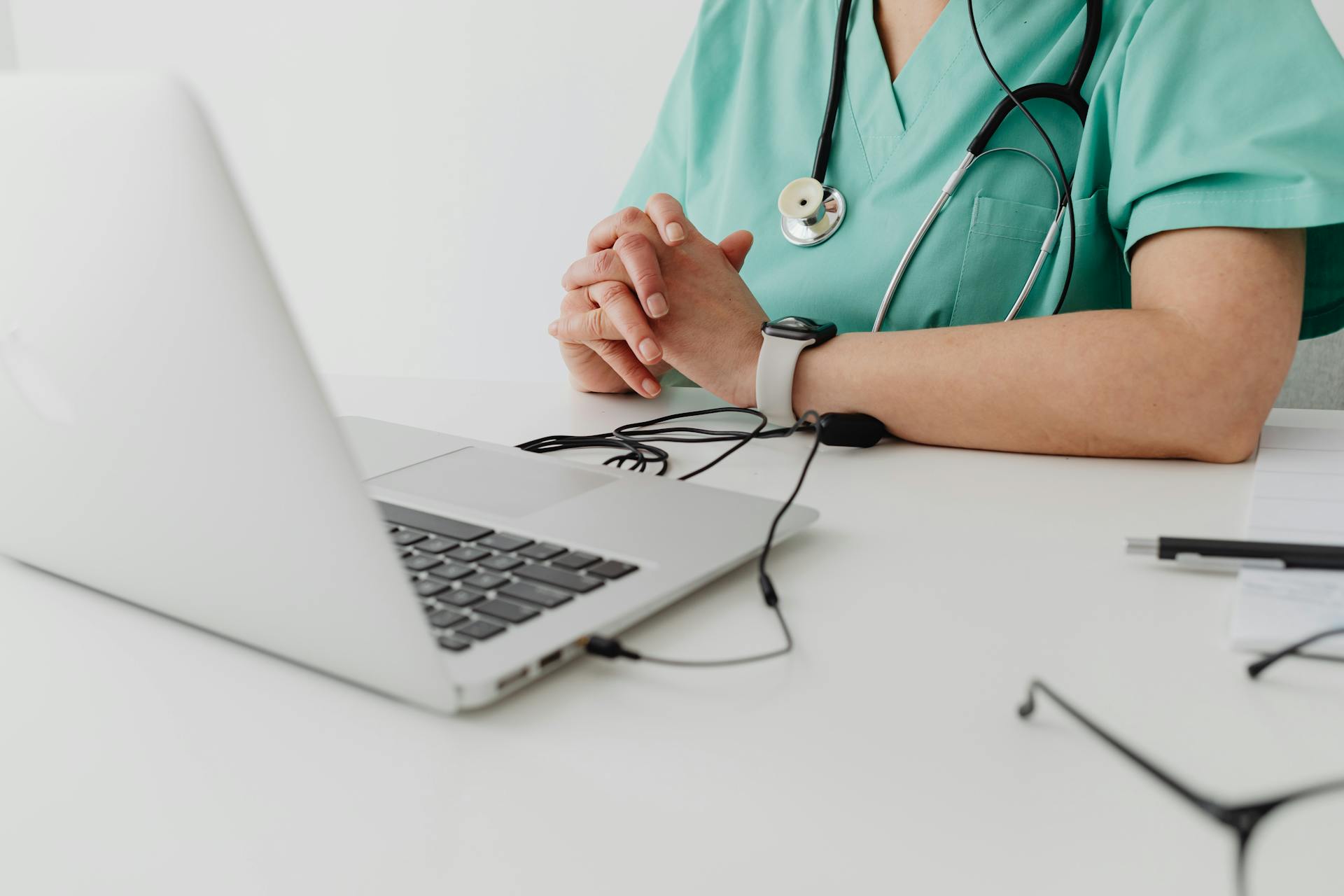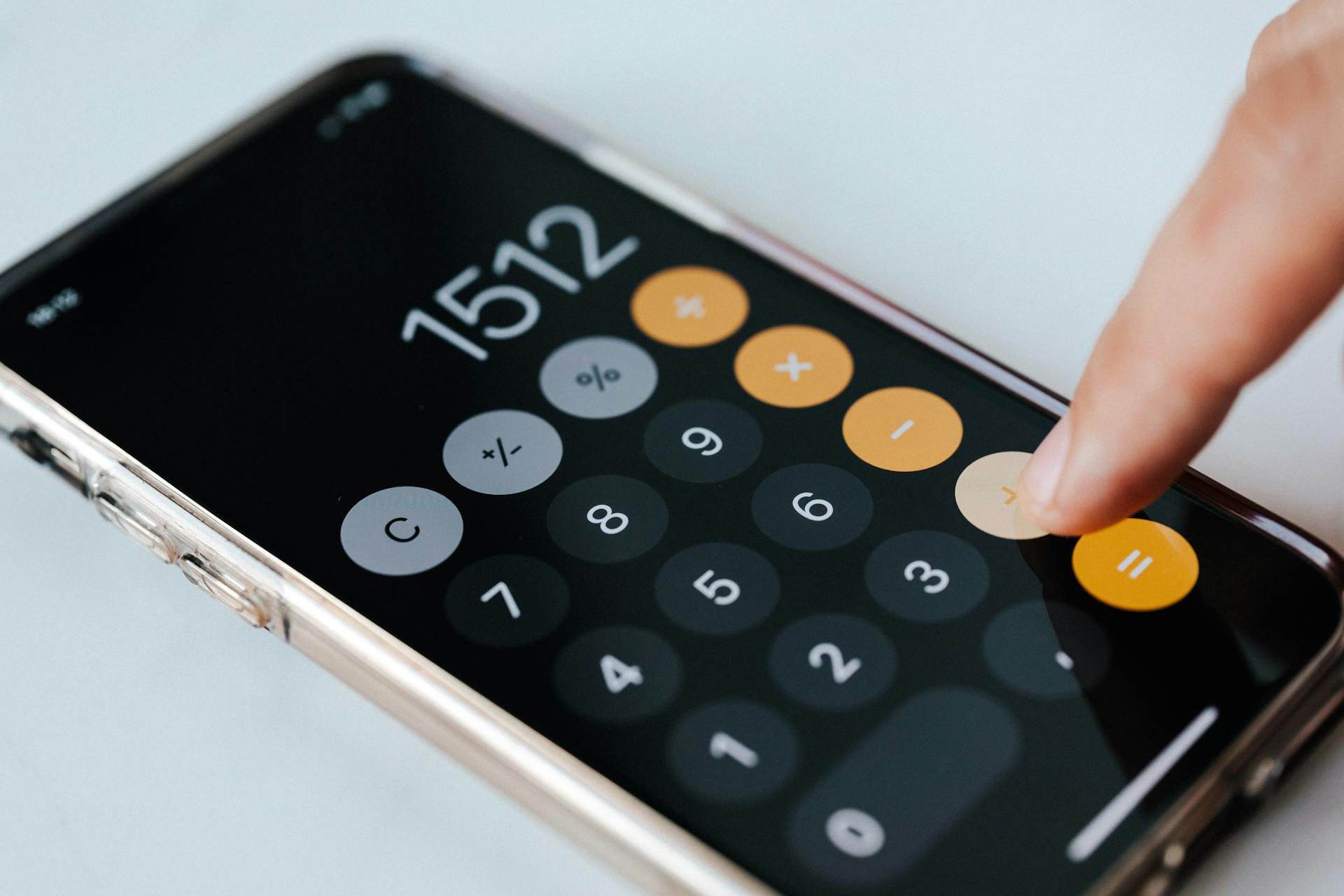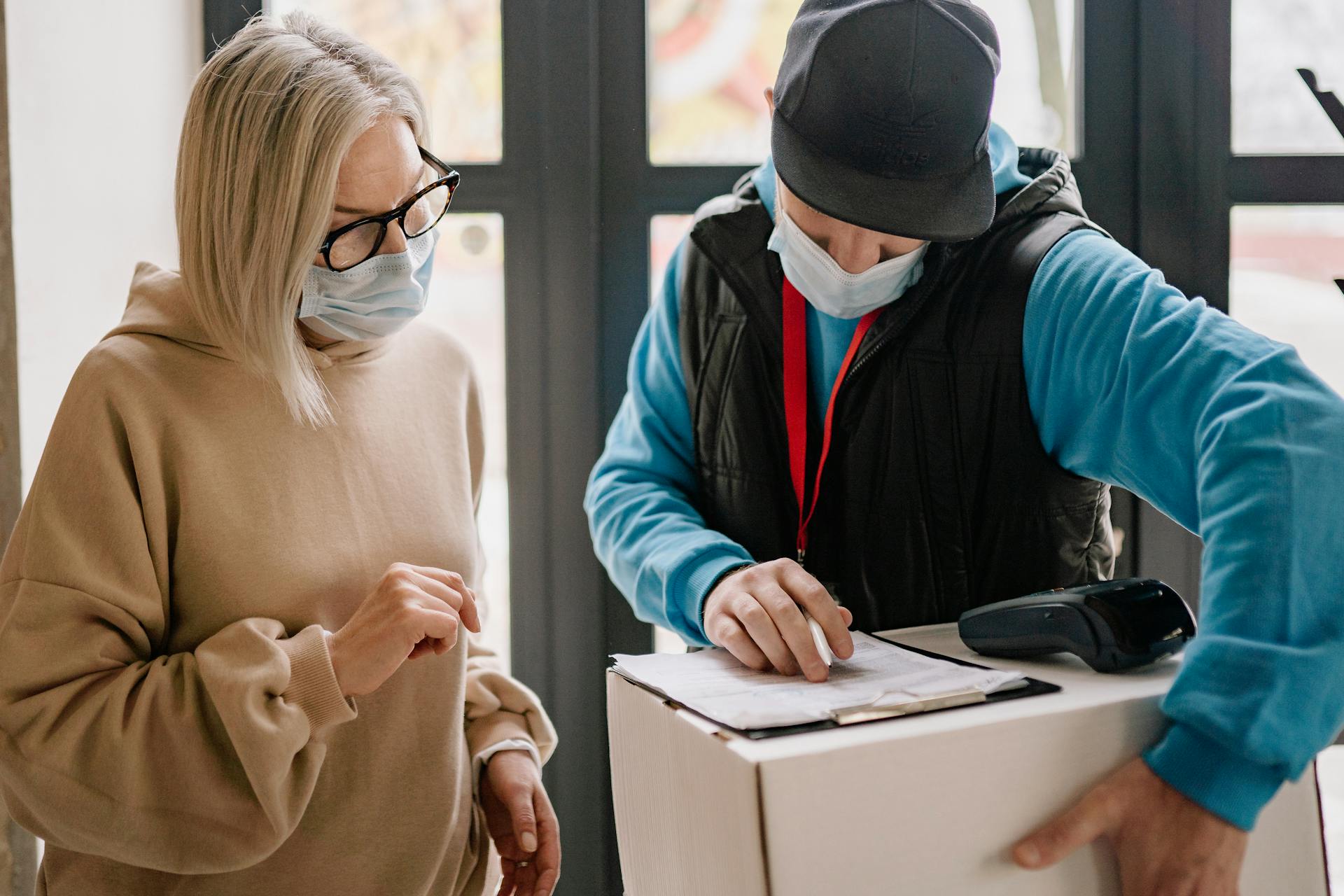
HIPAA regulations require healthcare providers to protect sensitive patient information, including medical records and billing information.
Faxing is still a widely used method for transmitting protected health information (PHI) in healthcare settings.
The HIPAA Security Rule requires covered entities to implement administrative, technical, and physical safeguards to ensure the confidentiality, integrity, and availability of PHI.
Faxing can be a secure method for transmitting PHI if certain precautions are taken, such as using secure fax machines or online fax services that encrypt data.
For more insights, see: Phi in Hipaa Stands for
Understanding HIPAA and Faxing
HIPAA compliance is a top priority when it comes to faxing. Ensuring patient confidentiality is a fundamental aspect of HIPAA when it comes to faxing, as it mandates stringent protection of individual health details.
Over 75% of healthcare communication still relies on fax machines, despite all the technological advancements. Traditional faxing, however, often struggles to meet today's strict HIPAA standards for protecting patient information.
There is no room for errors or compromises when handling sensitive health information. HIPAA (the Health Insurance Portability and Accountability Act) sets the standards for protecting patient data, making HIPAA-compliant faxing essential when sending critical documents.
Worth a look: Security Standards Hipaa
Traditional faxing poses inherent risks like inconsistent security measures and unauthorized access. Documents can be sent to the wrong recipients or left unattended, leading to potential HIPAA violations.
HIPAA-compliant faxing involves implementing systems and practices to ensure the secure transmission of protected health information (PHI). This includes employing safeguarded methodologies and ensuring faxes reach their intended destination securely.
Using non-secure fax machines significantly increases the risk of violating patient privacy under HIPAA. Encryption for fax transmissions protects patient data from unauthorized access, making it unreadable to unauthorized individuals.
Digital HIPAA-compliant faxing offers a smarter way to communicate in healthcare, with secure documents stored in the cloud and accessible with a click. No more paper jams, waiting for the machine to dial, or worrying about lost documents.
Expand your knowledge: Hipaa Access Control
Protecting PHI in Communications
Regularly clearing the memory of fax machines is a crucial safety measure for protecting PHI. If the fax machine stores documents in memory, regularly clear this memory or configure the fax not to save sent or received documents.
Securing physical locations is also essential. Place fax machines in secure areas where access is controlled, and ensure that only authorized personnel can retrieve faxes.
Using cover sheets is another best practice. Always use cover sheets that do not contain PHI, ensuring that any sensitive information is not visible on the first page to passersby.
Regular maintenance and disposal of fax machines are also important. When servicing or disposing of a fax machine, ensure that all memory is wiped clean. Consider using a professional service for secure disposal.
Training staff is vital to maintaining confidentiality and compliance. Ensure all staff members understand the risks of faxing PHI and are trained in proper procedures.
Alternative secure methods of transmitting PHI should be considered. Secure email or electronic health record (EHR) systems are more secure than modern fax technology.
Here are some key measures to protect PHI in fax communications:
- Regularly clear the memory of fax machines
- Secure physical locations
- Use cover sheets
- Regular maintenance and disposal of fax machines
- Train staff
- Consider alternative secure methods
By following these measures, healthcare organizations can protect PHI and maintain confidentiality and compliance.
Secure Faxing Options
Secure faxing options are crucial for healthcare providers who need to transmit sensitive patient information. Secure HIPAA compliant fax services like eFax Protect use AES 256-bit encryption to prevent unauthorized interception during transmission.
Online fax services have evolved to offer secure and reliable document exchange processes. Leveraging specialized online fax service options like iFax allows practitioners to engage in secure and reliable document exchange processes without fear of privacy violations or data breaches.
Traditional faxing poses significant security risks, as faxes can be intercepted or accessed by unauthorized individuals. HIPAA-compliant faxing, on the other hand, offers encryption and secure cloud storage, ensuring that sensitive documents are safe.
HIPAA-compliant faxes can only be accessed from secure locations, restricting access to authorized personnel only. This prevents misuse and maintains the confidentiality of patient information.
Advanced encryption protects documents during transmission and storage, while access controls ensure that only authorized users can view them. This robust security framework keeps patient information safe and helps organizations meet HIPAA regulations easily.
Recommended read: Hipaa Compliance Service Providers
Online fax services that are HIPAA compliant provide a marked improvement over traditional faxing methods. They enhance the dependability of fax transmissions, bolstering confidence between healthcare providers and their patients.
By choosing a cloud fax provider that adheres to HIPAA standards, healthcare providers can ensure that their faxing operations are secure and compliant. The chosen service should utilize multifactor authentication and provide encryption of faxes to prevent unauthorized access.
Best Practices for HIPAA Compliance
To maintain HIPAA compliance when faxing, it's essential to verify the online faxing company's level of security. Not all companies claim to be HIPAA-compliant, so you need to do some detective work to ensure they're following best practices.
Routine audits, staff training, and implementation of security measures are crucial to achieving HIPAA-compliance. This requires fostering a culture where patient information is handled with the highest level of protection and respect.
When transmitting sensitive data, verifying the recipient's fax number is vital to avoid accidental exposure of private information. Employing a cover page with a HIPAA-related warning can help prevent unintended access to faxes sent out.
A fresh viewpoint: Hipaa Security Services
Cloud Provider Selection
Choosing a cloud fax provider is a crucial step in maintaining HIPAA compliance. This involves verifying that the provider uses multifactor authentication and encrypts faxes to prevent unauthorized access.
A secure online interface is also essential, employing secure HTTPS connections to protect sensitive information. This is a must-have for healthcare providers who need to ensure the confidentiality of patient data.
A Business Associate Agreement (BAA) is a legal requirement for cloud fax providers that handle Protected Health Information (PHI). This agreement ensures that the provider is willing to adhere to HIPAA standards.
Audit logs are vital for monitoring fax activity and providing evidence of compliance with regulatory norms. This helps healthcare providers track and manage their fax activity efficiently.
A good cloud fax solution should allow for efficient management and retrieval of documents from various devices. This simplifies workflow and bolsters PHI security measures, making it easier to maintain HIPAA compliance.
Best Practices
To ensure HIPAA compliance, healthcare organizations must verify that their policies and practices align with HIPAA-compliant faxing standards.
Routine audits and staff training are essential to achieve compliance, and it's not just about checking off boxes.
Fostering a culture where patient information is handled with the highest level of protection and respect is crucial.
You need to do a bit of detective work to ensure the online faxing company you're choosing is following online faxing best practices to keep your patients' PHI secure.
Verifying the recipient's fax number is crucial to avoid accidental exposure of private information.
Employing a cover page bearing a HIPAA-related warning aids in preventing unintended access to faxes sent out.
Conducting routine checks on how faxes are handled can reveal weak points within communication processes via facsimile.
Sending faxes from a secure, access-controlled location ensures documents are not left unattended.
A reliable audit trail tracks what information was sent and received and by whom, which is essential for maintaining compliance.
Switching to an online fax service helps prevent unattended faxes in busy offices, which is a common mistake to avoid.
To maintain rigorous compliance and protect patient information, healthcare providers must be trained on HIPAA compliance and proper faxing procedures.
Secure Faxing Process
Secure faxing is a must for healthcare providers who need to send sensitive patient information. HIPAA-compliant fax services, such as eFax Protect, utilize AES 256-bit encryption to prevent unauthorized interception during transmission.
Using online fax services like RightFax can deliver a higher level of control in managing Protected Health Information (PHI) through end-to-end encryption during transfer phases. This includes detailed notifications, tracking statuses, and generating audit logs.
Sending faxes containing PHI should be delivered promptly to their intended recipient, and hard copies of patient information received via fax must be securely stored to prevent unauthorized access and loss of confidentiality.
HIPAA-compliant faxing offers encryption and secure cloud storage, which helps validate that your sensitive documents are safe. You can also track who sent and received the fax, providing an added layer of accountability and maintaining the privacy of patient information.
Faxes that are HIPAA-compliant can only be accessed from secure locations, whether using a physical fax machine or a cloud-based service. Access to the faxed information is restricted to authorized personnel only, preventing misuse.
Readers also liked: Hipaa Managed Services
Sending and receiving sensitive documents becomes quicker and easier with HIPAA-compliant faxing. It eliminates the delays and manual errors associated with traditional fax machines by using secure digital transmission.
HIPAA-compliant faxing prioritizes the security of sensitive data at every step, with advanced encryption protecting documents during transmission and storage. Access controls ensure that only authorized users can view them, keeping patient information safe and helping your organization meet HIPAA regulations easily.
Security and Efficiency
HIPAA-compliant faxing offers robust security features, such as AES 256-bit encryption, to protect sensitive patient information during transmission. This ensures that healthcare providers can confidently share protected health information (PHI) without fear of privacy violations or data breaches.
Traditional fax machines, on the other hand, pose a significant security risk due to their lack of encryption and secure storage. In contrast, digital HIPAA-compliant faxing platforms, like eFax Protect, utilize encryption protocols to ensure secure transmission of faxes.
Additional reading: Explanation of Hipaa
By switching to digital HIPAA-compliant faxing, healthcare providers can significantly increase their productivity. With digital faxing, providers can fax entire medical documents at once, rather than page by page, from their office computer, tablet, or mobile device. This process can save providers a significant amount of time over the course of a week, allowing them to get more work done throughout the day.
Security
HIPAA-compliant faxing prioritizes the security of sensitive data at every step, with advanced encryption protecting documents during transmission and storage.
Secure online fax services like eFax Protect utilize AES 256-bit encryption to prevent unauthorized interception during transmission, ensuring strict adherence to HIPAA compliance standards.
Cloud-based secure fax solutions designed for industries with stringent regulations maintain rigorous protection over health records through comprehensive HIPAA-compliant faxing systems.
Products like RightFax deliver a higher level of control in managing Protected Health Information (PHI) through features like end-to-end encryption, detailed notifications, and tracking statuses.
You might like: Health Insurance Exchange Notice
Having authorized users as part of a fax security system is not enough; you also want to ensure that clever hackers can't impersonate those authorized users, which is where having a combination of strong passwords and multi-factor authentication comes in handy.
These procedures ensure that only authorized users access PHI, protecting your patients' medical information at every step in the fax journey, just like Consensus does by using strong passwords and multi-factor authentication.
Faxes that are HIPAA-compliant can only be accessed from secure locations, whether using a physical fax machine or a cloud-based service, restricting access to authorized personnel only and preventing misuse.
Implementing these security measures, such as verifying fax numbers and using encryption protocols, reduces the likelihood of HIPAA violations and ensures that healthcare providers' fax communications are secure and HIPAA-compliant.
Efficiency
Traditional fax machines can be a hindrance to productivity due to their slow and laborious process. They often require users to print documents, walk to the fax machine, and fax each page individually.
Digital HIPAA-compliant faxing, on the other hand, is a game-changer. You can fax entire medical documents at once from your office computer, tablet, or mobile device.
Sending and receiving faxes can take time with traditional machines, and there's always the risk of paper jams or errors. Digital faxing eliminates these issues, making it a much more efficient method of communication.
By using HIPAA-compliant faxing online, healthcare providers can save a significant amount of time over the course of a week. This allows providers to get more work done throughout the day.
Digital faxing is much faster and more efficient than traditional faxing. You can send multiple faxes at once, receive them instantly, and even automate some processes like saving or forwarding faxes.
Compliance and Regulations
Healthcare providers are required to have protocols in place in case of a data breach, and report it to the Department of Health and Human Services, even if it was accidental or couldn't be prevented.
A data breach can include sending a digital fax to the wrong party, including another patient's file, or security breaches like hacking into your system.
Healthcare providers can stay ahead of data breaches by choosing HIPAA-compliant fax over encrypted email, as emails can still be hacked.
To minimize risks, verify the recipient's fax number before transmitting sensitive data, and refrain from sending such details to unauthenticated recipients.
Employing a cover page with a HIPAA-related warning and detailed identification helps prevent unintended access to faxes.
Here's an interesting read: Hipaa Data Governance
Data Breach Regulations
Data breach regulations are in place to protect sensitive patient information in the event of a security lapse. Healthcare providers are responsible for reporting data breaches to the Department of Health and Human Services, even if the breach was accidental or unavoidable.
A data breach can occur in various ways, including sending a digital fax to the wrong party or including another patient's file in a fax. Security breaches, such as hacking into a system, can also lead to a data breach.
A fresh viewpoint: Definition of Breach Hipaa
Choosing HIPAA-compliant faxing over encrypted email can help stay ahead of data breaches and limit the use of data breach regulations. This is because emails can still be hacked, unlike faxes.
Consensus has a strict code of conduct to limit potential data breaches. Each vendor they work with is required to have a comprehensive security program, risk management program, and data protection compliance program.
Here are some common types of data breaches that healthcare providers should be aware of:
- Sending a digital fax to the wrong party
- Including another patient’s file when you send a fax
- Security breaches, such as someone hacking into your system
Security protocols also provide continual monitoring for data breaches, so any issues can be caught and handled immediately. This helps prevent data breaches from impacting a business.
What Are
HIPAA-compliant faxing is crucial for healthcare entities to protect patient data. Every healthcare entity has a responsibility to protect patient data and certify they meet HIPAA rules.
Patient privacy is safeguarded through HIPAA-compliant faxing practices. This includes implementing secure transmission and management of sensitive health information.
HIPAA rules dictate specific steps for HIPAA-compliant faxing. Step 4 outlines a key rule for HIPAA-compliant faxing.
HIPAA Compliance for Healthcare
Staying connected securely is a top priority in healthcare. You can easily share important information without worrying about privacy using HIPAA-compliant tools like medical texting, voicemail, and appointment scheduling.
In healthcare, it's essential to focus on patient care while keeping communications safe and efficient. HIPAA-compliant faxing helps you do just that.
HIPAA-compliant faxing makes it easy to share medical documents securely, especially when patients see multiple specialists. This keeps everyone in the loop without compromising patient privacy.
Intriguing read: Why Hipaa Is Important in Healthcare
Featured Images: pexels.com


